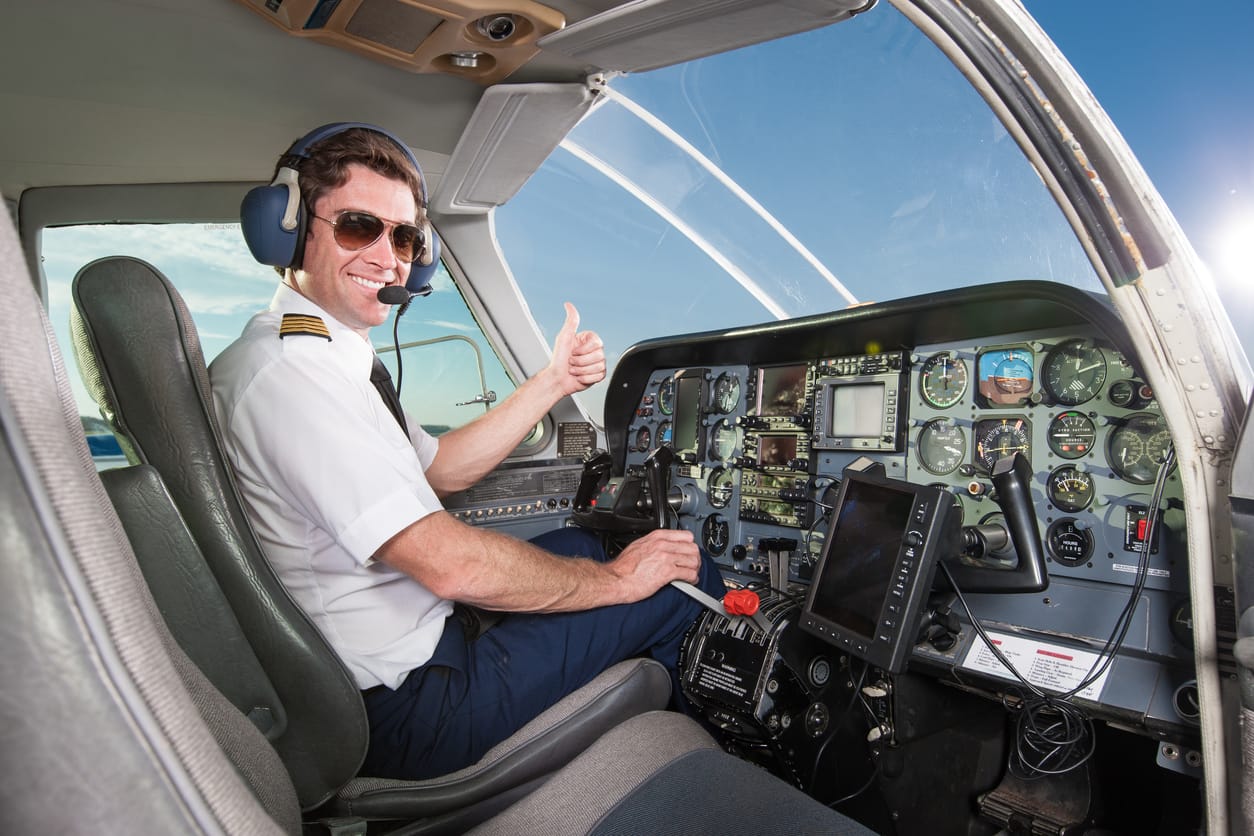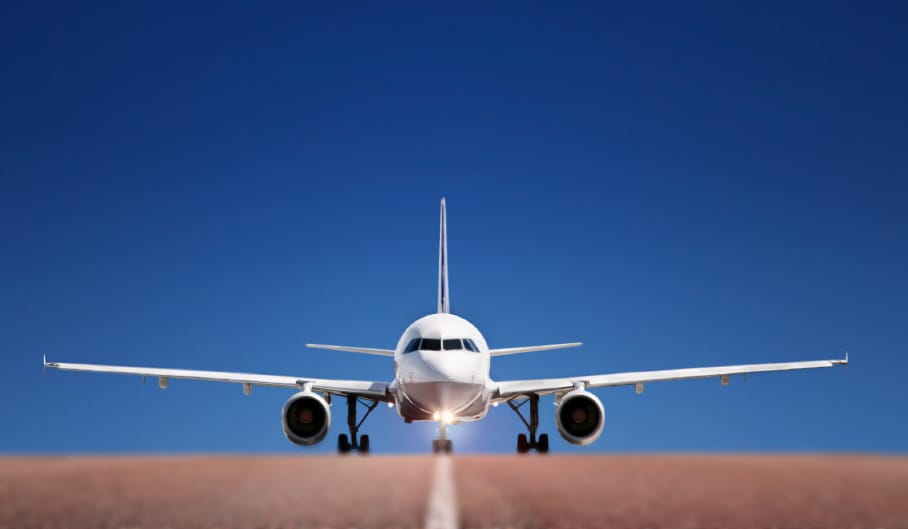There are many paths to having a career in aviation. When most people think of becoming a professional pilot, they usually picture airline or military pilots. However, flight instructors, transport pilots, general aviation pilots, and charter flight pilots are a vital part of the nation’s aviation system.
Flight schools and universities offer programs which can help you enter any of these careers, and becoming a charter flight pilot is often desirable for students who are building time and would like greater variation in their flight planning and destinations. Being a charter flight pilot can be a different life from the more regimented one as a military or airline pilot. Like any job in the airline world, it offers its own rewards to those who appreciate its specific lifestyle.
What Do Charter Flight Pilots Do?
Charter flight pilots are hired by private organizations, the government, or individuals. Charter flights operate by specific request or contract. Usually, charter pilots take a client to one destination or a series of destinations. Others have a regular schedule of repeat shuttle flights. Charter flight pilots tend to have closer contact with their passengers and may even drive their passengers to appointments once the flight is through. Outside of passengers’ luggage, charter pjlots typically do not carry cargo.
In addition to having excellent flying skills and safety awareness, then, charter pilots must also demonstrate stellar safety awareness, flexibility, and strong customer relation skills. Their salary may fluctuate, so some charter pilots are also flight instructors or have other jobs. Depending on their experience and the kind of charters they fly, the salary of a charter pilot can clock in at anywhere from $38,000 to $137,000 a year.
Air Charter Companies
Air charter companies are governed by Part 135 of Title 14 of the Code of Federal Regulations. Title 14 is commonly known as the Federal Aviation Regulations, or FARs. In contrast, Part 121 governs passenger airlines, and Part 91 covers private operators.
The path to becoming a pilot for an air charter company is similar to becoming an airline pilot. After completing initial training, a new pilot must build flight hours through jobs such as pipeline patrol, aerial survey, or flight instructing. There are charter companies which will allow low-time pilots to act as a First Officer on their aircraft, yet the flight time from those positions is rarely allowed to be logged by the new pilot.
In those scenarios, the company is authorized for single-pilot operations, meaning the First Officer is unnecessary for the flight to be legal, and therefore cannot log the time. It is certainly good experience for a young pilot to ride along and learn from a veteran; however, there is a balance between getting the experience versus working a job where the time can go in the pilot’s logbook.
Thresholds, Insurance Providers, and Regulatory Experience
At companies which require First Officers for their operation, the minimum threshold for experience is usually 500 hours. Each companies’ particular insurance provider determines the exact number. There is no regulatory requirement for a charter FO’s experience, only that they possess a Commercial Pilot certificate with appropriate category and class ratings.
For charter Captains, the regulatory experience requirements depend on the type of operation. The most basic kind of charter is that which is operated under Visual Flight Rules in a single-engine, piston-powered airplane with less than ten seats. For that operation, the pilot needs only a Commercial certificate and 500 hours of flight experience. Of those 500 hours, at least 100 must be cross-country flight time, including 25 hours at night. There are many restrictions on VFR operators, and those companies are mainly found in Alaska.
The next step up is charters flown under Instrument Flight Rules. An IFR charter captain must have at least a Commercial certificate and Instrument rating. The pilot must have over 1200 hours of flight time, of which 500 hours must be cross-country time, 100 hours must be at night, and 75 hours of instrument time, 50 of which needs to be in actual flight, not a simulator.
For IFR charters using turbojet airplanes, the captain must have 1500 hours and the Airline Transport Pilot certificate. The same requirement applies to any airplane which has 10 or more passenger seats.
Becoming a Pilot in Command
Part 135 operators are typically on-demand, meaning they don’t have a schedule, like an airline, and fly only when passengers specifically request a trip. However, charter companies are allowed to run scheduled flights in multi-engine airplanes if the captain has the ATP certificate with category and class ratings, and a type rating as required by the airplane. Scheduled Part 135 operators typically fly airplanes with 19 or fewer passenger seats because any more than 19 seats requires a Flight Attendant, and that is simply not economical for most charter companies.
Before being named as Pilot In Command of a charter flight, the captain must have at least a few hours in the make and model of the aircraft to be flown while under the supervision of an authorized company check pilot. For piston, single-engine airplanes, only 10 hours is needed. In multiengine piston airplanes, the requirement is 15 hours. For multi-engine turboprops, 20 hours is required, and for turbojet-powered airplanes, 25 hours.
Maintaining Proficiency as a Charter Pilot
Charter pilots must maintain proficiency in the aircraft they fly. Within the last three months of a charter flight, the pilot must have performed three takeoffs and three landings in the same category, class, and type (if required) of aircraft to be used for the charter. If the flight will be at night, then the three takeoffs and three landings must also be at night and within the last three months.
However, if a pilot has three night takeoffs and landings, those will count for daytime flights, as well. That, then, is a slight difference from the basic requirements of Part 91, which specify day or night landings and takeoffs for purposes of passenger carrying pilot currency.
Ready to soar in your aviation career?
Mr. Matthew A. Johnston has over 23 years of experience serving various roles in education and is currently serving as the President of California Aeronautical University. He maintains memberships and is a supporting participant with several aviation promoting and advocacy associations including University Aviation Association (UAA), Regional Airline Association (RAA), AOPA, NBAA, and EAA with the Young Eagles program. He is proud of his collaboration with airlines, aviation businesses and individual aviation professionals who are working with him to develop California Aeronautical University as a leader in educating aviation professionals.











Do a charter pilot need visa to enter in any other country than his base location?
Hi Nandita! Typically yes, aircrews need visas for the countries they will enter. Aircrews (and passengers) who do not leave the airport or its “transit” area may not need visas. I would check with the affiliated government institutions in the appropriate country to be sure. Things can change swiftly and it is always good to verify often.
Very good read. I am brainstorming my pilot career. What I am mainly trying to find out is, what is the most stable job in terms of salary, and also what will allow a better work/home balance?
That’s a good question, Ben! There are many aspects to consider! Our team is more than happy to discuss the different avenues! Feel free to give us a call at (661) 615-5915!
Hello I am in college right now and I really want to become a charter pilot but I do not know where to start or even how to get started, any tips
Hi Caide, thank you for your comment! We’d love to speak more with you in regards to charter pilot training! Please reach out to our admissions team at 661-615-5915. We look forward to speaking with you!